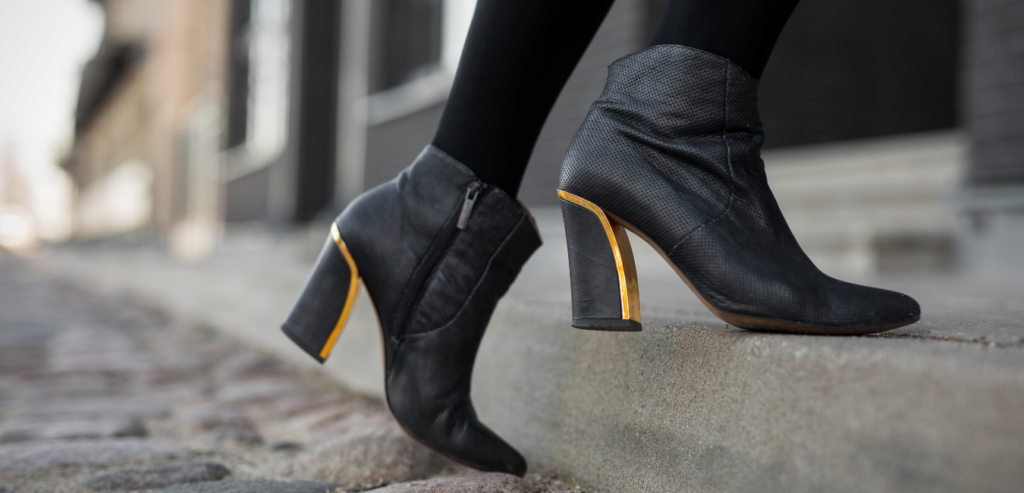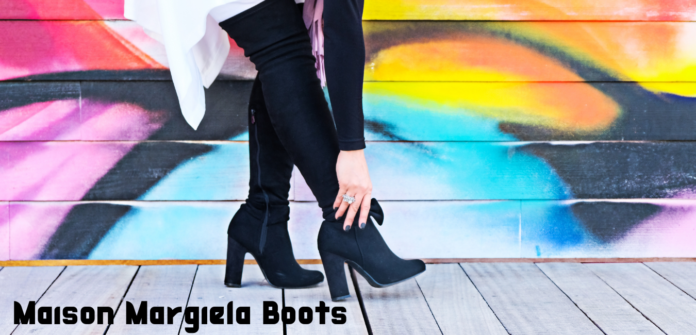The Maison Margiela is considered one of the most fashionable and memorable shoes in the industry. This shoe design is enticing with different types that come with a chunky heel and a fitting silhouette. Generally, the shoe forms a kind of wardrobe piece that is hard to resist.
Maison’s legacy adds to its perfection that intrigues even some of you that lack sartorial interests. The brand was incepted in 1980 and remained one of the most popular and exciting shoes in the luxury market, with fashion fans and celebs alike gravitating towards the stylish design.
In 2020, the brand celebrated its 40th anniversary, which is enough evidence that it has experienced even more renaissance so far. To add icing to the cake, technological development and social media have improved the brand’s performance in various sectors influencing a new generation of fans who love and share the style broadly.
But How Did It Come To Be?
The idea behind Maison Margiela boots was realized by a Belgian designer named Martin Margiela, who had an attachment with fashion and design throughout his international trips. On one of his trips to Japan, Martin came across an ancient shoe design in Japan with a split-toe style.
Martin noticed the shoes’ unusual look despite it being around for centuries in Japan. However, the design had faded from modern fashion. The Tabi design, as the locals knew it, had been around in the 15th century in the country, and the available image showed the shoes split socks worn with the traditional thong sandals.
Back then, the Tabi was based on a concept that separating the big toe from the rest provided comfort and balance for meditation. In the 20th century, a work shoe with the same design was introduced and named the Jika-tabi, inspired by the initial design. These types of shoes are still available in Japan, although not widely accepted.
Maison Margiela Tabi Design
The first Margiela Tabi was presented in the 1988 designer debut fashion show. In addition to the shoe making a distinct statement, the brand also painted the sole in red paint, leaving an iconic hoofprint as the model’s cat walked. Since then, the brand has increased production and sales.
Initially, the designer made the Tabi a boot but used the split-toe style on other items such as flats, sandals, and sneakers. In 1990, the designer decided to conduct a grand experiment on the shoe introducing the baby Tabi which came with an ankle strap.
To the extreme, the designer also invented the sole-only Tabis with no straps or laces only to be held by the wearer’s feet. It was one of the most memorable debuts for the Spring 1996 collection and only required a tape to stick them with your feet.
Why Are The Maison Margiela Boots So Popular?

The fact that the boots have been around for more than 25 years makes them iconic and easily recognizable. Despite other split-shoe style productions from other brands, the design has remained unique to the Margiela brand. Notably, other brands such as Nike introduced the detached toe design while Vetements did its own-split-toe design.
However, none of these productions and designs has had a lasting legacy as much as Margiela. The secret behind Margiela’s dominance with this style is the cultural influence that comes with the shoes.
For instance, in 2020, the brand made its shoe hyper recognizable by its fans, the new generation, and those who follow fashion news. The brand ensured that it kept the shoe revamped by including champagne labels, fluorescent orange, electric blue and metallic leather.
Besides, the brand has taken advantage of the technological advancement to utilize its numerous social media platforms such as Facebook, Twitter, and Instagram. For instance, the entire Instagram account affiliated with the brand maintains frequent updates about the Margiela boots.
Besides, these platforms are used to document the brand’s history and the developments made on the different shoe designs available. One of the notable accounts is the @margielatab1 which provides information about the Margiela Tabi boots posting rare archival photos of the design as well as guides to style the shoes.
The Tabi was reborn recently when Margiela collaborated with Reebok, a sneaker brand seeking to rejuvenate its influence in the fashion industry.
The new Tabi style is available in red and yellow, black, blue and white details mashing up traditional and modern elements. On its site, Reebok incorporated the Instapump Fury in 1994 to combine with the split-shoe and came up with something completely fresh and new.
Most Notable Maison Margiela Boots
The Tabi Boots
This is one of the most recognizable styles in all the Margiela boots, as it has been in the market for a fair share of time. As detailed, the style is inspired by the Japanese sock, which shares the same name.
The Margiela tabi was created in the late 80s and remained the most preferred among fashion fans. Some of the notable Tabi features include ankle-high buffed leather and a 2-inch stacked cylindrical block heel. The shoe has a tab-slot at the interior, a cleft square, and a leather tan lining that completes the entire look.
The Platform Boots
These boots take a fresh approach from the Tabi, setting them on a wooden platform sole and heel. The boots are made from premium leather and still have the Margiela signature split-toe style, which comes in a wide range of colors
Graffiti Boots
These boots will make you noticeable due to their graffiti decoration printed on the iconic leather material. The Maison Margiela graffiti boot is a rework of the popular Tabi and comes with bold graffiti scrawling all around.
As you have seen, Maison Margiela boots are made with the highest quality materials, mostly half skin leather. Besides, the inner sole is also expertly crafted with leather to provide ultimate support and comfort. Margiela sought to make an invisible shoe creating the illusion of walking barefoot on a high heel and hence the split-toe design.











